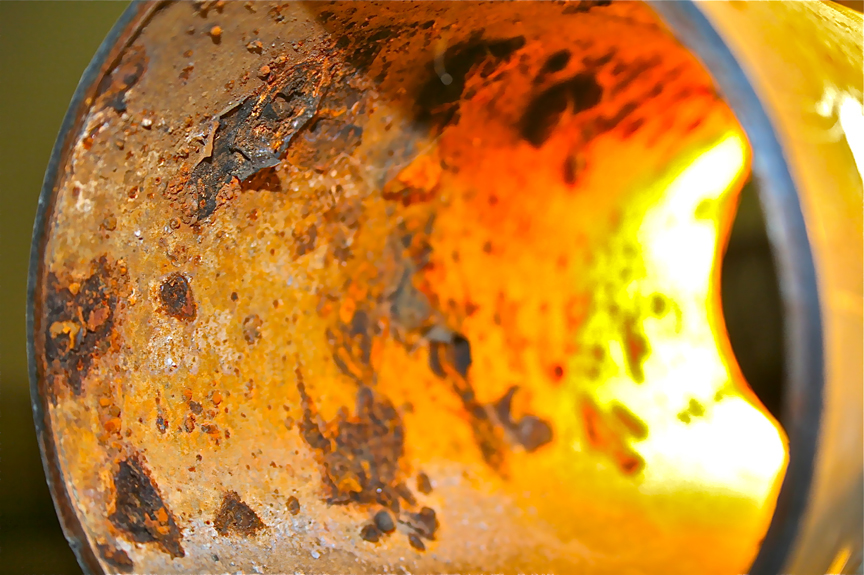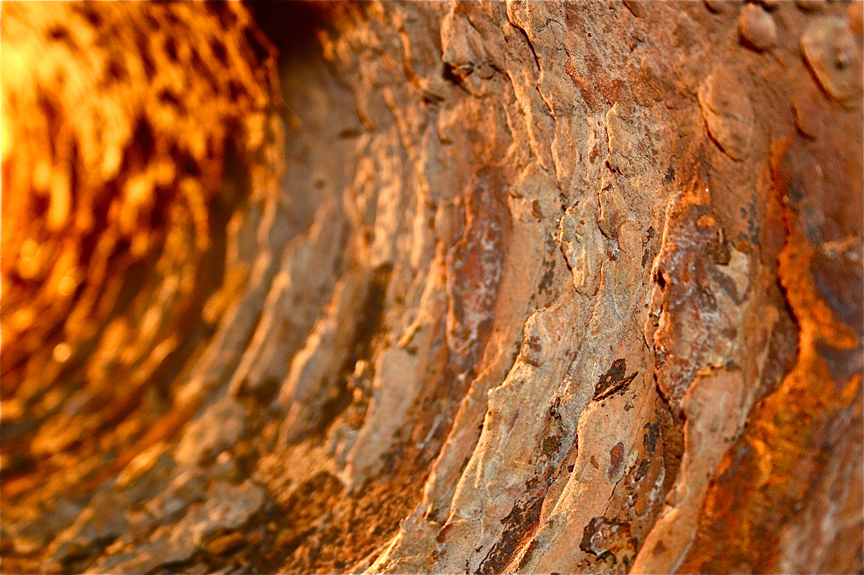
Fire sprinkler pinhole leaks repair in Fort Worth/ Dallas by an experienced professional team from Crisp-LaDew Fire Protection
Corrosion in Fire Sprinkler Systems.
Damaged Caused by Microbiological Influenced Corrosion (MIC)
Crisp-LaDew recognizes that Fire Sprinkler Systems piping are vulnerable to damage from Microbiological Influenced Corrosion (MIC) and other types of corrosion. Crisp-LaDew can identify threats to your existing fire sprinkler systems and can help protect your investment.
 MIC can damage and destroy both new and old fire sprinkler systems. The rusting process within fire sprinkler systems occurs frequently. The water, high in oxygen, reacts with iron. It starts rusting and the pipe becomes damaged. Chemical acids start either as a by-product of bacteria and/or the by-product of reduced oxygen. The deposits formed consist of red-brown ferric hydroxide and greenish black ferrous hydroxide, to include other mineral deposits. These deposits are called tubercles and, at times, are a combination of “microbiological damage” and/or “oxygen cell” corrosion.
MIC can damage and destroy both new and old fire sprinkler systems. The rusting process within fire sprinkler systems occurs frequently. The water, high in oxygen, reacts with iron. It starts rusting and the pipe becomes damaged. Chemical acids start either as a by-product of bacteria and/or the by-product of reduced oxygen. The deposits formed consist of red-brown ferric hydroxide and greenish black ferrous hydroxide, to include other mineral deposits. These deposits are called tubercles and, at times, are a combination of “microbiological damage” and/or “oxygen cell” corrosion.
Microbiological Influenced Corrosion (MIC) is a common problem in fire sprinkler systems because of the presence of microbes, water, adequate nutrients and corrosive by-products. These microorganisms form colonies on the surface of a metal, producing slimes that collect and glue deposits to the metal. They do not form uniform layers, but local “community centers.” Once a colony has formed, it tends to attract other biological and non-biological species (metals and chlorides) to the colonization sites.

NFPA 13 Section 9.1.5
The NFPA has required areas with water supplies know to have contributed to MIC of sprinklers systems piping; water supplies shall be tested and appropriately treated prior to filling of tested of metallic piping systems.
Read an interesting report from the NFPA on “Corrosion in sprinkler pipe – not one but many problems”
System Failure
All this leads to the formation of crevices and tubercles. The end results of MIC are plugged sprinkler heads from the tubercles and debris and thinning of the metal causing pinhole leaks. This destruction can severely cripple or disable a fire sprinkler system and cause catastrophic damage to the building and its valuable contents.
Commons signs of Corrosion-(MIC) in fire sprinkler systems:
- Pinhole leaks in pipes.
- Water is black and has a fouls, rotten egg odor.
- Reduced water pressure in the system.
- During flow tests, rust or black water stains the concrete.
- Metallic particles seen moving in water stream
- Visual build up of material within pipes
Comprehensive Corrosion Program
Crisp-LaDew offers one the most comprehensive Microbiological Influenced Corrosion (MIC) programs in the industry.
- Water Testing and Analysis
- Pipe Evaluation
- Corrosion Monitoring
- Corrosion Mitigation
Crisp-LaDew offices are located in Dallas, Fort Worth, Granbury and North Texas.
Commercial and industrial fire sprinkler systems with complete service support from Crisp-LaDew. To learn more about Crisp-LaDew Fire Protection Services, please call (817) 572-3663.
